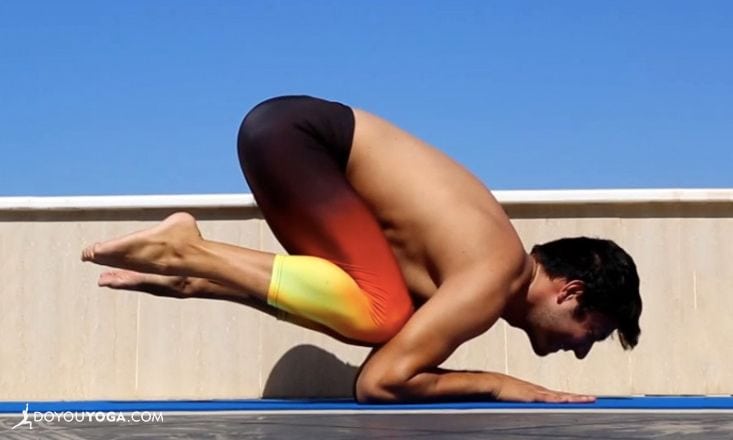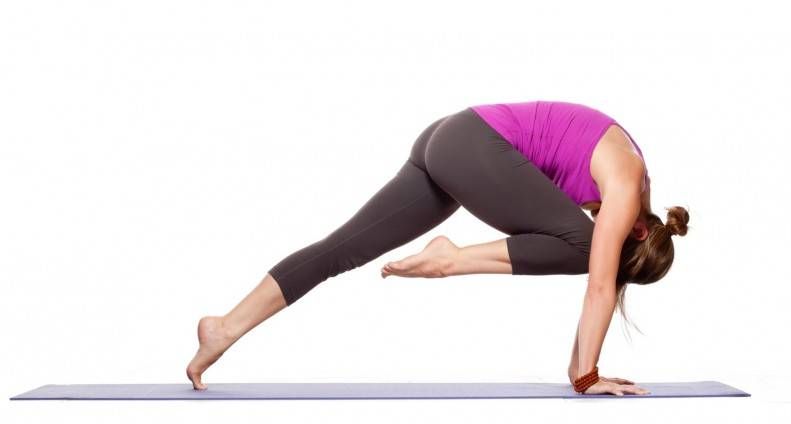Keen on gaining core strength, but sick of crunches? We are too. While crunches are a tried-and-true abdominal exercise, they can be…boring. On top of that, straight crunches are not an effective exercise to engage all of the muscle groups that comprise “the core.”
Core muscles are much more complex than the commonly thought of six-pack muscles. They include four (read: FOUR!) layers of muscle fibers over your abdominal cavity, the diaphragm, the pelvic floor muscles, erector spinae (muscles that support the lower back), and the glutes!
In order to effectively strengthen all those muscles, we gotta move and groove in multi-planar motions. Left, right, up, down, twist, turn. So, let’s get to it…
Cheetah or Bird Dog Pose
I like to flow between Three-legged Down Dog and Cheetah to really fire up my core. You can add this pose in between vinyasas or add it onto a Surya Namaskara A or B for example. The key to getting the most out of Cheetah pose is to hold your knee as close to your body as you can while you shift your shoulders over your wrists—all while using your core strength to do so.
If that is too intense, you can create a similar motion and receive equal benefits with Bird Dog (pictured above) by simply releasing down onto one knee.
Dolphin Pose
Dolphin pose is known for strengthening the shoulders, but it can be intensified to also build core muscles by walking your feet in as close to your hands as you can. On a scale of Downward Dog to Forward Fold, you want to be closer to the Forward Fold.
To take it further, pull your core tight to push your hips closer towards alignment with your shoulders.
Twisting Chair
In Chair pose, twisting your torso to the right and left engages the deeper layers of your core—including your internal obliques, external obliques, and transverse abdominis. And because you are in a deep, squat-like position, you are also engaging your glutes and lower abdominal muscles.
To add on another layer of core work, squeeze your thighs towards one another. This motion will work your lower abdominals and pelvic floor.
Side Plank
Side Plank is like a Tadasana (Mountain Pose) tipped over on its side. In this posture, gravity will naturally compromise your efforts to hold your body up. So, while you work to keep your hips from falling towards the floor, or prevent the shoulders or hips from nudging you forward or back, or stop your ribs from twisting, you are also shaping and strengthening your sides.
Forearm Crow Pose
Getting into Forearm Crow (a.k.a. Baby Crow Pose) will immediately let you know if you’re using your core or not. By eliminating the arm strength required to do regular Crow, the pose relies on 100% core strength.
What Does “Engage Your Core” Mean?
You often hear teachers say “engage your core,” but what does that mean? How do you do that? Don’t flex your abs and push them out. Instead, think about engaging your core by:
1. Taking an exhale and pressing all the air out of your belly
2. Knitting your rib cage together, as if you are wearing a corset
3. Slightly pulling up on the front of your pelvis to engage your lower abs (while maintaining the natural curve in your spine)
Yes, it’s ALL core work. While the poses mentioned above specifically work the core muscles, everything is attached to your core—every movement we make really originates from the core (shoutout to Mr. Joseph Pilates).
If you bring your awareness and attention to your core when you are moving through your yoga practice, you will build core strength and improve all other aspects of your practice.
Image Credit: Cetin Cetintas








